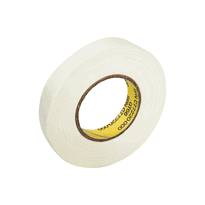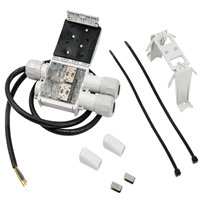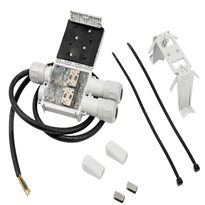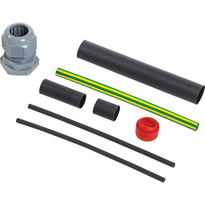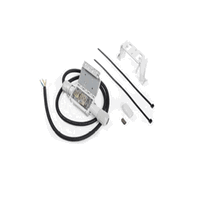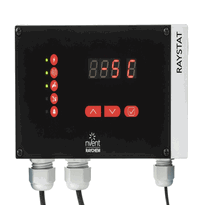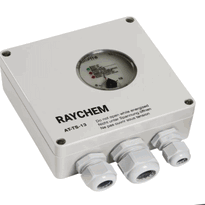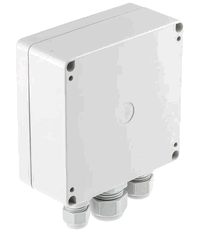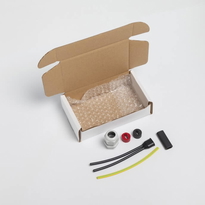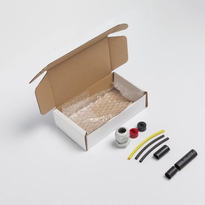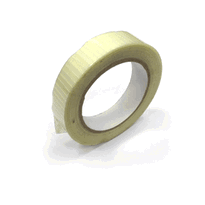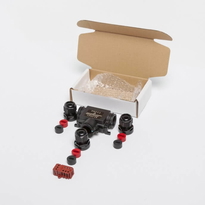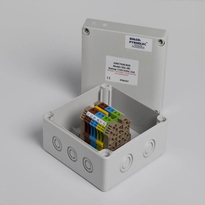Heat Wrap Tape for Pipes
Heat wrap tape for pipes is a specialized insulation material designed to prevent freezing, manage heat transfer, and protect against environmental hazards. It effectively maintains consistent pipe temperatures by creating a thermal barrier, often incorporating reflective coatings for added safety. Suitable for both indoor and outdoor use, this tape can be self-regulating or provide fixed heat output, with proper installation, inspection, and adherence to manufacturer guidelines ensuring optimal safety and efficiency. Continued exploration reveals more detailed installation and maintenance insights.
Understanding How Heat Wrap Tape Protects Pipes
Heat wrap tape primarily protects pipes by creating a thermal barrier that minimizes heat loss and helps retain the temperature of the fluid within. This insulation prevents heat transfer between the pipe and its surrounding environment, ensuring a consistent internal temperature. It also provides a thermal time delay, slowing the rate at which pipes gain or lose heat, which assists in maintaining desired temperature levels. The surface of the tape remains significantly cooler than the pipe itself, offering protection from burns or accidental contact. By layering materials such as reflective or protective coatings, the insulation’s effectiveness is enhanced, providing additional shields against environmental hazards like flames, moisture, and contamination. Furthermore, maintaining surface temperatures above the dew point helps prevent condensation, reducing the risk of corrosion and moisture-related damage. Thicker insulation increases heat retention and reduces surface temperature, which ultimately extends the service life of the pipe, ensuring safer and more reliable operation. Using proper installation techniques ensures the insulation performs optimally over time.
The Different Types of Heat Wrap Tape and Their Uses
Various types of heat wrap tape are designed to meet diverse insulation requirements and environmental conditions encountered in pipe protection across the UK. Understanding the features and suitable applications of each type can help ensure optimal performance and safety. Self-regulating heat tapes adapt their heat output automatically in response to ambient temperatures. They increase heat in colder areas and reduce it when temperatures rise, making them energy-efficient and safer compared to constant-wattage tapes. These tapes are well-suited for environments with variable or mixed climates, commonly found in residential, commercial, and agricultural settings. Their ability to automatically adjust heat helps prevent overheating and reduces energy consumption. Self-regulating tapes include built-in thermostats, which further enhance precise temperature control and safety. These thermostats help maintain consistent pipe temperatures and reduce the risk of heat damage to surrounding materials. Constant-wattage tapes provide a fixed level of heat regardless of surrounding conditions. Although initially less expensive, they tend to consume more energy and carry a higher risk of overheating, particularly in less controlled environments. These tapes are appropriate for settings with consistent freezing temperatures, where reliable, continuous heat is required to prevent pipe freezing. Additional options include silicone or foil-faced fiberglass wraps, which offer extra insulation and durability suitable for industrial applications. These materials are designed to withstand harsher conditions and provide long-lasting protection. PVC wraps are another choice, offering moisture resistance ideal for environments exposed to moisture or harsh weather conditions. They help to prevent corrosion and damage to pipes. Specialized systems, such as those manufactured by Paladin, combine advanced self-regulating technology with certifications for direct burial and wet locations. These systems provide reliable freeze protection in critical areas, ensuring safety and operational efficiency even in challenging conditions. Proper selection of pipe insulation is essential to ensure maximum effectiveness of the heat wrap tape system. Choosing the right heat wrap tape depends on your specific insulation needs, environmental factors, and operational requirements. Proper selection ensures efficient energy use, safety, and effective protection for your piping systems across the UK.
Step-by-Step Guide to Installing Pipe Heating Tape
Before beginning the installation process, it's essential to thoroughly prepare the pipe and surrounding environment to ensure safety and optimal performance. Inspect pipes for leaks or damage, and avoid installing heat tape over faulty or leaking pipes. Confirm that the pipes are dry and free from dirt, grease, or sharp edges that could damage the tape. Proper preparation avoids potential hazards and ensures the heat tape operates effectively. To enhance the durability and reliability of your installation, consider using a tape with airtight sealing capabilities, which can help prevent moisture ingress and improve energy efficiency. Measure the pipe’s length and diameter accurately to select appropriately rated heat tape in terms of wattage and size. When attaching the tape, start at one end and run it along straight sections or spiral it around curved pipes to ensure even heat distribution. Secure the tape with electrical tape or cable ties every 12 to 15 centimeters, avoiding overtightening. After installation, insulate the pipes thoroughly to maximize efficiency and safety, ensuring all components are properly covered and protected.
Practical Applications and Benefits of Pipe Heat Tape
Pipe heat tape provides an effective solution to numerous cold-weather challenges by delivering direct warmth to water pipes. This helps prevent the water inside from freezing and expanding, which can cause pipes to burst and lead to significant water damage. It's vital for safeguarding non-flowing or exposed pipes during the winter months, thereby minimizing the risk of structural damage caused by frozen pipes. This system keeps water in a liquid state, avoiding costly repairs and interruptions to the water supply. Its versatility allows it to be used on metal, plastic, or PEX pipes in residential, commercial, and industrial environments, both indoors and outdoors. Many heat tapes come equipped with self-regulating thermostats that adjust energy consumption based on ambient temperature, thus reducing energy waste. Self-regulating heat tape is particularly popular because it adapts to temperature changes, improving safety and efficiency. Installation is straightforward and compatible with existing insulation, offering a reliable and cost-effective method of freeze prevention with minimal ongoing maintenance. Additionally, using high-quality insulation alongside heat tapes can enhance energy efficiency and prolong the lifespan of the pipes and heating system.
Tips for Maintaining and Ensuring the Safety of Your Heat Wrap Tape System
Maintaining and ensuring the safety of a heat wrap tape system involves both proper operation and diligent inspection practices.
Proper installation begins with running the tape from the plug end near the outlet, securing it with electrical tape rather than wiring, and avoiding overlaps that could cause overheating or fires. Selecting heat-resistant tapes is crucial to prevent premature failure or safety hazards, as not all tapes can withstand high temperatures safely. Regular inspections should focus on checking for wear, damage, or leaks at pipe joints. Frayed or inefficient tape should be replaced promptly to maintain system integrity.
Testing the system before colder weather sets in is essential to ensure reliable operation, while inspecting insulation and electrical connections helps prevent weather-related damage and electrical shorts. Always use tapes approved for heating systems and install them over leak-free pipes. Adhering strictly to manufacturer instructions regarding coverage area and temperature regulation ensures optimal safety and performance. Properly installed insulation supports system safety and prolongs lifespan by protecting against environmental damage.
Protect the system with suitable insulation and weatherproofing to prolong its lifespan and maintain safety standards.
Conclusion
Proper selection, installation, and maintenance of heat wrap tape are crucial for effective pipe protection and energy efficiency. Understanding the different types of tape available and following detailed installation procedures ensure optimal performance and safety. Regular inspections, along with adherence to manufacturer guidelines, help prevent failures and potential hazards. Implementing these best practices provides a reliable, durable solution that maintains pipe integrity in cold environments. Precision and care in handling heat wrap tape contribute significantly to the long-term effectiveness and safety of your piping system.








